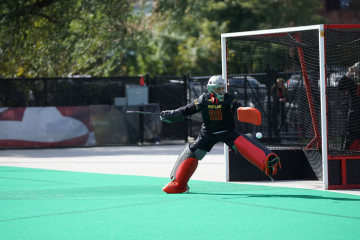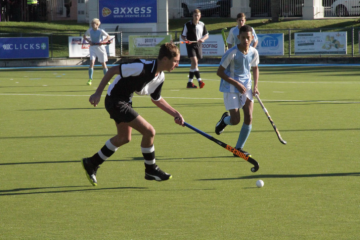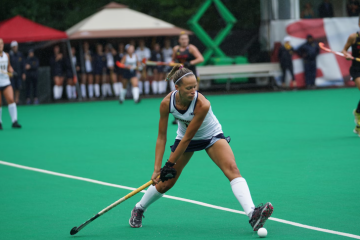Field hockey, a sport steeped in tradition and played with fervor across continents, is a mesmerizing blend of agility, precision, and strategy. While the game’s essence lies in teamwork and coordination, individual skills play a pivotal role in determining the outcome on the field. From the deft touches of a forward to the unwavering stance of a goalkeeper, every move is a testament to years of practice and dedication. This article delves into the core skills that define the game, offering insights and guidance for both novices and seasoned players.
The Basics of Dribbling
Dribbling is the foundation of field hockey. Mastering this skill allows players to navigate the field, evade opponents, and set up scoring opportunities.
- Technique: The key to effective dribbling is maintaining a low stance and keeping the ball close to the stick. Use the flat side of the stick and make small touches to control the ball’s direction.
- Vision: Always be aware of your surroundings. While dribbling, keep your head up to spot teammates, opponents, and potential passing lanes.
- Change of Pace: Varying your speed can confuse defenders. A sudden burst of speed can help you break away from a pursuing opponent.
Dribbling is more than just moving the ball; it’s about control, vision, and unpredictability. Practice regularly to enhance your proficiency.
Precision Passing
Passing is crucial for maintaining possession and creating scoring chances. A well-timed pass can be the difference between a goal and a missed opportunity.
- Types of Passes: Push pass, hit pass, and slap pass are the primary types. Each has its own advantages and is used based on the situation.
- Accuracy: Focus on the receiver’s stick and not the player. Ensure your body is aligned with your intended direction.
- Timing: A pass should be made when your teammate is in a position to receive it, not when they are marked heavily by opponents.
Passing is an art. It requires vision, understanding, and impeccable timing to be executed perfectly.
Fitness and Conditioning for Field Hockey
Beyond the technical skills, a player’s physical fitness and conditioning play a significant role in their performance on the field. Field hockey is a demanding sport that requires endurance, strength, agility, and speed. Proper conditioning ensures that players can maintain their energy levels throughout the game, make quick sprints, change directions rapidly, and recover faster after intense plays.
Table: Essential Fitness Components for Field Hockey
| Component | Description | Recommended Exercise |
|---|---|---|
| Endurance | Ability to sustain prolonged physical or mental effort | Long-distance running |
| Strength | Power to exert force against resistance | Weightlifting, Plyometrics |
| Agility | Quickness in changing direction without losing balance | Ladder drills, Cone drills |
| Speed | Ability to move swiftly across the field | Sprinting, Interval runs |
| Flexibility | Range of motion in joints and muscles | Stretching, Yoga |
Physical conditioning complements technical skills, ensuring that players can execute their moves effectively and sustain their performance throughout the match. A well-rounded fitness regimen, tailored to the demands of field hockey, can significantly enhance a player’s capabilities and resilience on the field.
Defensive Techniques
Defense is as vital as offense. A strong defense can thwart the opponent’s scoring chances and turn the tide of the game.
- Tackling: The flat stick tackle and poke tackle are essential defensive moves. Timing and positioning are crucial to avoid fouls.
- Blocking: Use your body and stick to block the opponent’s path and shots. Stay low and be prepared to move quickly.
- Positioning: Always be between the ball and the goal. Anticipate the opponent’s moves and adjust your position accordingly.
A robust defense is built on anticipation, positioning, and effective tackling. Regular drills can enhance these skills.
Goalkeeping Fundamentals
The goalkeeper is the last line of defense. Their skills can make or break a game.
- Reflexes: Quick reflexes are essential for making saves. Practice with rapid-fire shots to improve reaction time.
- Positioning: Stay close to the goal line and be prepared to come out and challenge the attacker if needed.
- Clearances: After making a save, ensure you clear the ball safely away from the danger zone.
Goalkeeping requires a unique skill set. Agility, awareness, and bravery are the hallmarks of a great goalkeeper.
In essence, field hockey is a game of finesse, strategy, and skill. Whether you’re dribbling past opponents, making that perfect pass, defending your goal, or making a crucial save, every skill contributes to the team’s success. Mastery of these skills doesn’t come overnight. It requires dedication, practice, and a passion for the game. So, pick up your stick, step onto the field, and embark on the journey to mastering the art of field hockey.



0 Comments